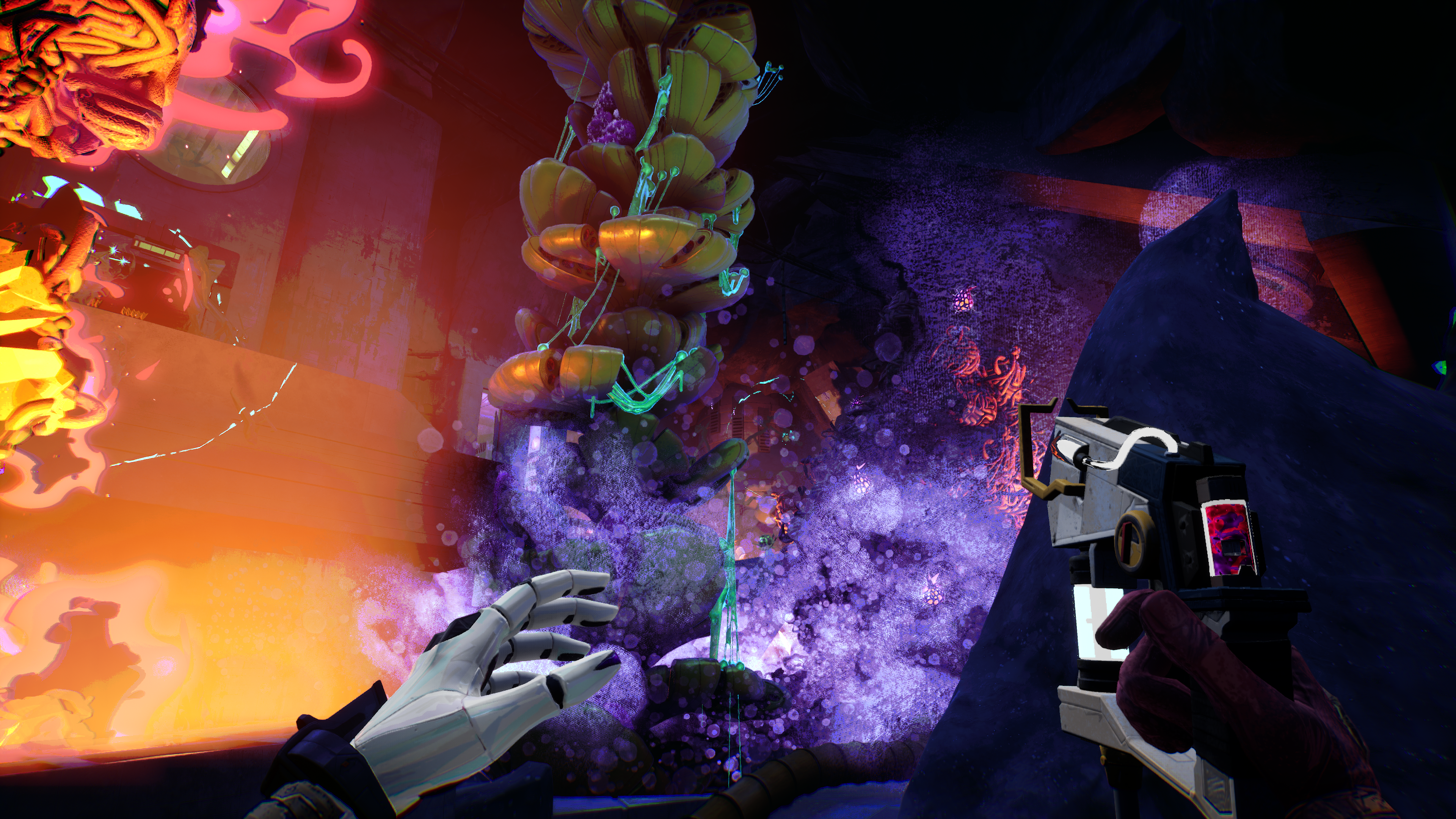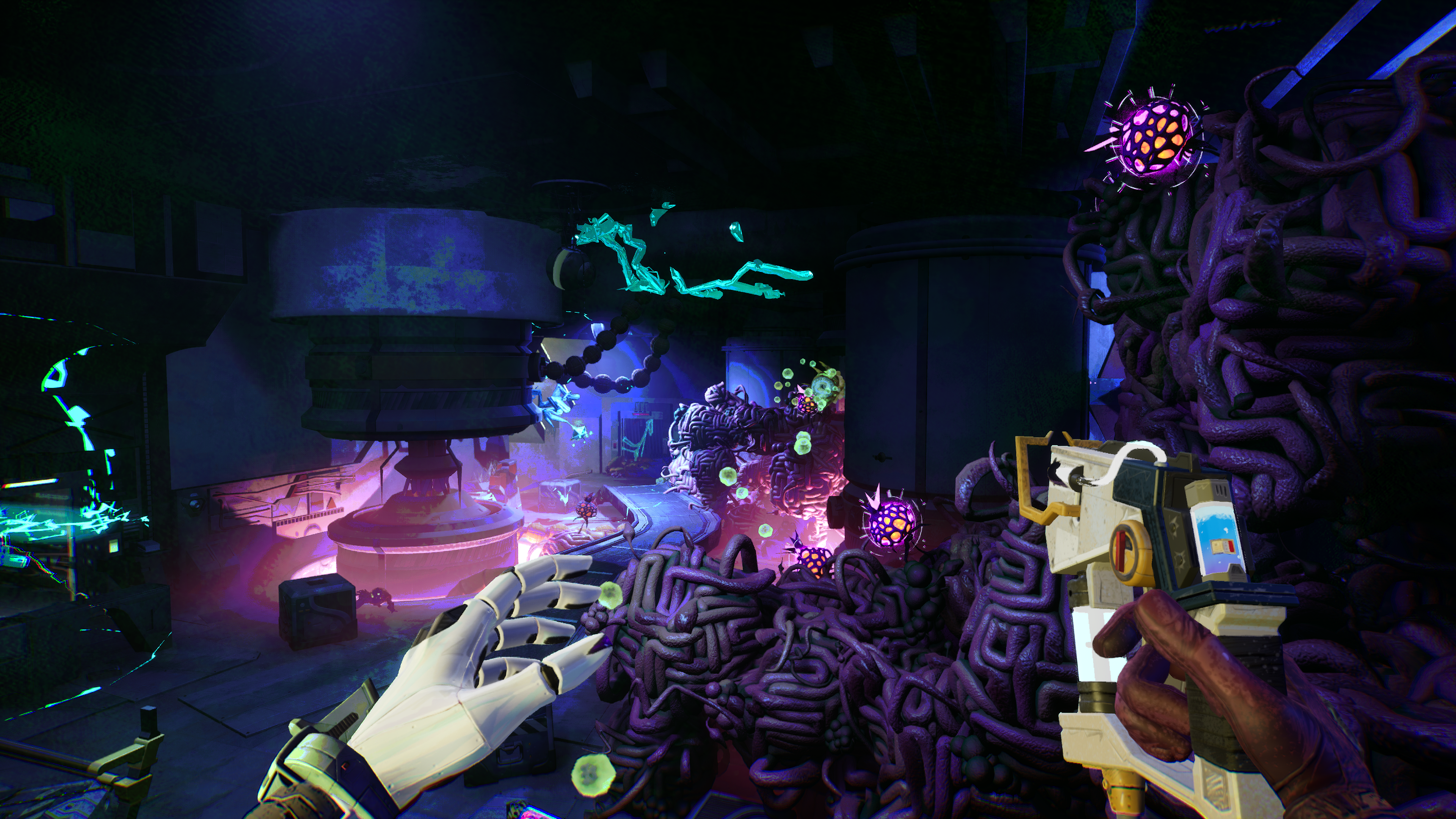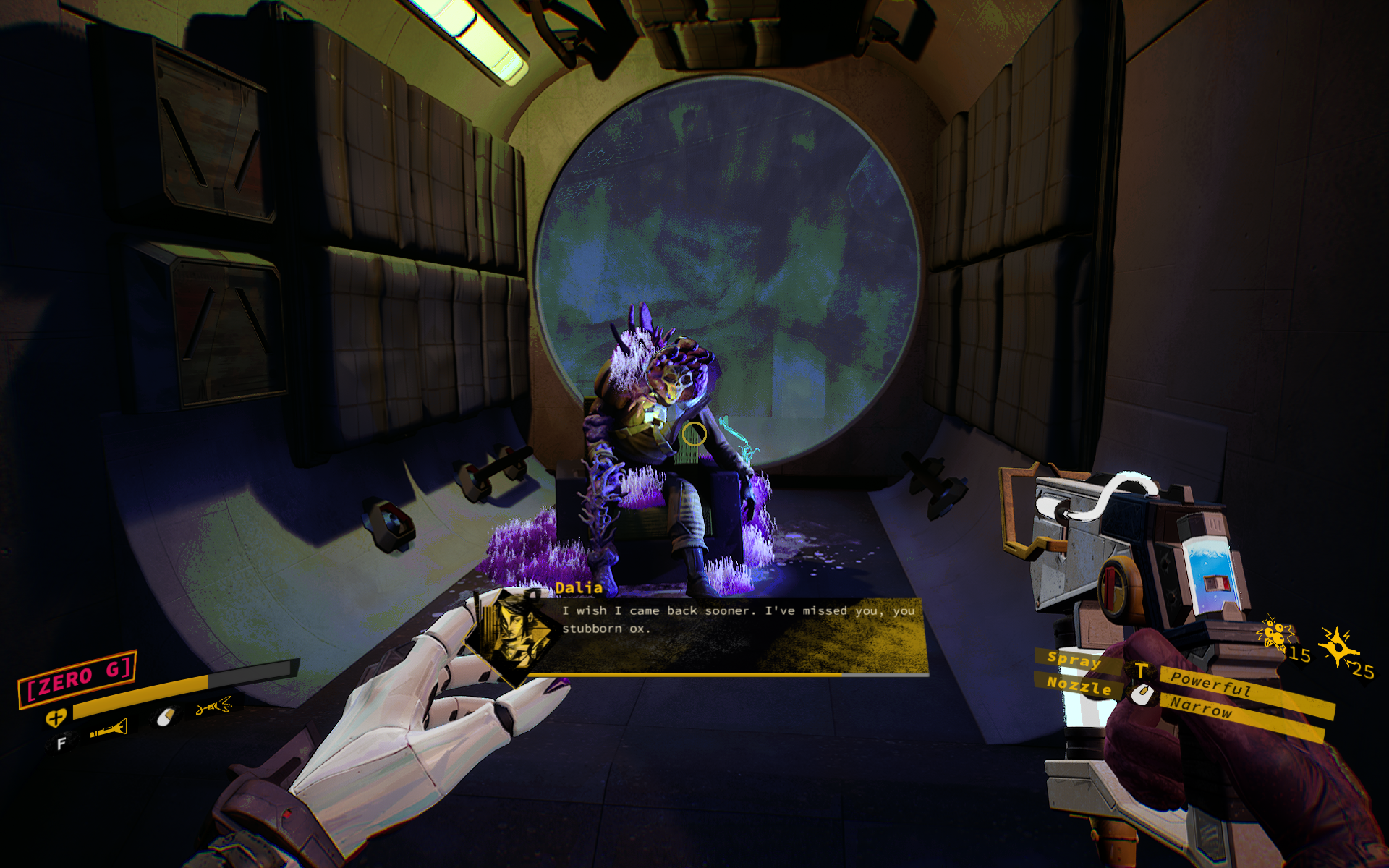“It’s always been a scary and a risky space,” Joel Burgess says of the games industry. But the studio head of Soft Rains and creative director of Ambrosia Sky thinks it’s been “electrified and on fire lately”.
That hasn’t deterred the former Skyrim, Fallout 3, Fallout 4, Fallout 76 and Grindstone dev from founding a studio with others from a wealth of AAA and indie backgrounds. “Several of us have relatively long careers and felt like it was a good time to be owning our destiny,” he says.
Burgess is joined on a video call in late May by Soft Rains’ narrative director Kaitlin Tremblay, technology director Jules Glegg and head of operations Trang Nguyen. It’s not an unusual vista for these colleagues. Soft Rains, though headquartered in Toronto where the majority of its staff live, is a fully remote studio. Nguyen explains that flexibility is valued and it allows the studio “to better access talent” where it couldn’t if constrained by location.
Finding the right talent has been key to Soft Rains since its formation in late 2022. Its workforce of veterans from big ticket games to award-winning indies (Ubisoft’s Watch Dogs: Legion, Riot’s Valorant, Capybara's Grindstone, Laundry Bear’s A Mortician's Tale) has provided the chance to shape a fresh, “sustainable” studio born of diverse experience.
Tremblay says Soft Rains first built a foundation of understanding what employees enjoyed in their previous work environments before transposing that to the studio for “a really good work culture”. That approach is of equal standing to Soft Rains providing a base from which to develop games that “people are really excited about”, they add. Sustainable work habits, such as leaning on colleagues’ varied skill sets and avoiding burnout by shunning industry crunch, arms the studio with a respectful robustness. Soft Rains is shaped directly by the people in it. “We set out to make a studio that only we could make with this team,” says Tremblay.

And only Soft Rains could make Ambrosia Sky—premiered at the PC Gaming Show 2025. The first-person RPG is centred on a homecoming mission for protagonist Dalia. She is tasked as a ‘Scarab’ to clean away space fungi and lay the dead to rest after a cataclysmic event on her home space station, which she departed 15 years ago. The game is defined by features including: dynamic cleaning mechanics, multiple narratives (spawned from Dalia’s coroner-style dictation notes and found narratives of the deceased) and a unique, painterly graphic art style helmed by Academy Award-winning artist Adam Volker.
Among the distinct talents and accolades held between the Soft Rains team members is a “strong sci-fi sensibility” that naturally lent itself to make a game of that genre, explains Tremblay. She is quick, however, to clarify that many genres have influenced the game. “Joel has a depth of fantasy experience. I have a depth of horror experience. Trang actually has really great mycology and foraging experience,” they say. “All of these inspirations really come into play.”
The studio takes its name from Ray Bradbury’s 1950 sci-fi fix-up novel The Martian Chronicles, a personal favourite of Burgess. Contained wholesale within the collection of short stories is Sara Teasdale’s 1918 poem There Will Come Soft Rains.
“That particular short story is extremely Fallout,” Burgess says in reference to Bethesda’s blockbuster titles in which he served as a level designer. The dev decided to place Teasdale’s full literary work in a Fallout 3 location, which is read out in part by a robot. “Technically the studio name is a reference to the Teasdale poem, which is a reference to the Bradbury story, which I could in a vainglorious way say is a reference to Fallout 3,” continues Burgess. “But it’s a studio name we chose because it feels fresh and in some ways antithetical to studio name formats. It captured the identity and the stand-apartness [sic] that we wanted.” The poem itself is themed on springtime and moving on from a disaster – a nod to the premise of Ambrosia Sky. “The smell of fresh earth is really redolent in the poem and it’s really relevant in what we were hoping to do when we built this team.”

Burgess is cognisant of the power of nostalgia in sci-fi culture but believes that the strongest work looks to the future by drawing from a well of contemporary issues. The “anxieties” pervading current society and the technology knotted with it, Burgess says, is wrung out thematically in Ambrosia Sky. “We think there’s a sophisticated audience that’s going to be hungry for the kinds of stories that step out into the future,” he says.
Indeed, sophistication appears to live in the game’s multiple storytelling structures. These are through Dalia’s observation notes as well as through found text logs and video wills, which in turn provide an overarching narrative of her homeland. “She’s coming home to a place and this place has an identity,” says Tremblay. “It’s filled with people and their disparate ideas. So it’s these two different things that speak to each other. [It’s] Dalia's reflection of the place she left and grappling with survivor's guilt while also reading messages about how people’s lives carried on after she left, the relationships they formed and the ways they tried or didn’t try to save each other. That really gives the world itself its own character.”
Exploration of death in the game also has sophistication. “We have these vignettes of Dalia finding people and you can perform what we call a death ritual for them,” explains Tremblay. The death rites sees Dalia take a DNA sample to upload to a larger project which the Scarabs are pursuing. “But she’s also saying goodbye to people and to people she loves,” adds Tremblay. “These are moments I’m really excited about because they let us talk about the different ways people respond to and experience their own death. People have different levels of investment in that – some are really flippant, some are really earnest.”
Having a full stack of writers, designers and engineers at Soft Rains from the start has enabled the team to roll out early prototyping. That has given the studio essential breathing room to not only experiment but to also respect the studio/game’s visual identity.
Glegg says the biggest challenge has been adhering to its art style while working on the spraying mechanics required for eliminating space fungi. Smart fluidity was needed to match the brushstroke aesthetics of Volker’s designs. “The industry solution to [cleaning mechanics] has typically been a lot of diagonal faces, a voxel-y, Minecraft kind of look,” explains Glegg. “We really want the game to have this handcrafted appearance, creating procedural art that looks handmade.” Masses of organisms can be carved, burrowed into and cleaned “in a very volumetric and responsive way”, which allows players a lot of choice in how they approach it.

Despite trying a few off-the-shelf technologies during prototyping, the studio settled on “a very bespoke” combination of different rendering approaches and pipelines to allow the art team to “ultimately decide how this stuff crumbles”, adds Glegg. Testing and adapting the mechanics to flow with fungi of “any shape, any size, with thousands of objects” presented a huge challenge. But it’s not one Glegg regrets undertaking. Sometimes she cleans the gym maps after work purely “to relax”.
Soft Rains has relied on SideFX’s 3D animation Houdini for procedural generation. Burgess and Glegg say that they haven’t utilised generative AI systems such as image generation for Ambrosia Sky but “absolutely embrace” software like Houdini. “It allows us to proceduralise parts of our workflow so that a small team like ours can punch above our weight”, says Burgess.
Lifting the pressure off by using software such as Houdini fits the studio’s sustainability ethos; there’s no need for crunch because it’s well resourced. “It sits within our values to make sure that sustainability is a very key part to our culture,” says Nguyen. “That comes from sustainability of how we develop the game, how we grow the studio and also [an individual’s] ability to do the work. We have a team that’s highly supportive of each other but we have a lot of generalists within our team so we’re able to fill in the gaps if we feel like somebody needs to take a vacation. Work sustainably is the value we have.”
A sustainable workforce has clear implications for the longevity of a new studio. The creative and commercial success of its work is also paramount. Much of that will come from offering up a special debut. Ambrosia Sky sets the scene for Soft Rains with a story that at its core is about survival, death and humanity. But its indelible mark comes from its striking art style.
“It’s a bit of an existential priority for us to stand out,” says Burgess. “There are a lot of first-person sci-fi games and there’s a dominant art style that tends to start defining those games. And so even if I wasn’t excited about the artistic merit, which I am, it’s important for us to have a unique visual identity. It’s also a strategic advantage that’s really important in a competitive landscape.
“We’re a new team with a new IP,” he adds, “Nobody’s going to care about our résumés. They’re going to care about what [the game] looks like, how it plays and their experience. Adam and the art team’s work is an enormous part of that. I’m incredibly satisfied with where it’s landing.”













 Bengali (Bangladesh) ·
Bengali (Bangladesh) ·  English (United States) ·
English (United States) ·